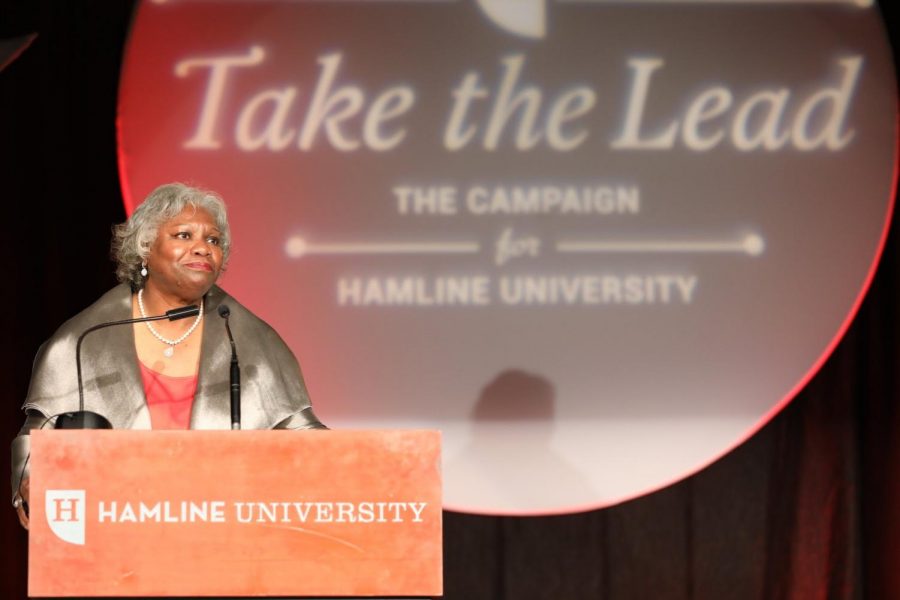Hamline ‘takes the lead’ – again
Hamline University aims to raise $110 million by 2023.
November 20, 2019

President Fayneese Miller announced the Take The Lead fundraising campaign had already raised $50 million of its $110 million goal at the President’s Circle Dinner on Oct. 10, 2019. Fundraising informally began when Miller became president in 2015.
Hamline University recently announced a new comprehensive fundraising campaign with the ultimate goal of raising $110 million by 2023.
President Fayneese Miller announced the campaign, titled “Take the Lead: The Campaign for Hamline University,” at the 2019 President’s Circle Dinner on Oct. 10. She also announced that the campaign has already raised $50 million during its ‘silent phase,’ which began when Miller became president in 2015.
The campaign is prioritizing $30 million for financial aid and scholarships and will distribute the remaining funds through several other categories. Campus improvements, academic initiatives and support for innovation will receive $20 million. Student support and athletic programs will each receive $10 million.
Speaking at the President’s Circle Dinner, President Miller explained that the campaign would help “create the Hamline University of the 21st century—a place which will create opportunities for all, create upward mobility for our graduates and create the leaders of tomorrow across our city, state and region.”
“The campaign is not about the dollars, the campaign is really about improving the experience of Hamline students and giving students and faculty the tools they need to do their work every day,” said Mike Tompos, the Associate Vice President for Institutional Advancement.
Tompos elaborated on how the funds would be spent in each of the fundraising categories, emphasizing the importance of allocating the most amount of money to financial aid.
“We hope to raise $30 million to support what we call spendable scholarships, so money we can spend now, and also build scholarship endowments, which are permanent funds that would generate scholarship money ad infinitum,” Tompos said.
Regarding the other fundraising categories, Tompos highlighted in each case that the additional funds would directly benefit the experience of students, though he added that “it’s hard to be very specific” about exactly what those dollars will be spent on.
For example, money raised for student support would cover things like grants for housing, meal plans and summer prep before students’ first term. The funds allocated for academic initiatives could allow for the creation of new programs at Hamline, as well as provide money for students doing collaborative research over the summer or during the school year to make up for the cost of not having a job.
Tompos expressed general enthusiasm about Hamline being able to reach its fundraising goal.
“We have a lot of confidence, not just me, but our board of trustees has endorsed this goal,” Tompos said. “We think it’s a good stretch for Hamline, but we’re confident we’re going to attain it, and we would like to exceed it.”
Hamline’s last fundraising campaign ended in 2004 and raised $150 million, though it lasted longer than the “Take the Lead” campaign will last.





